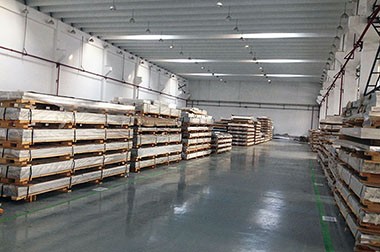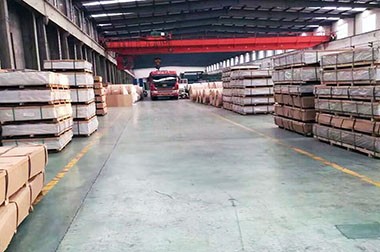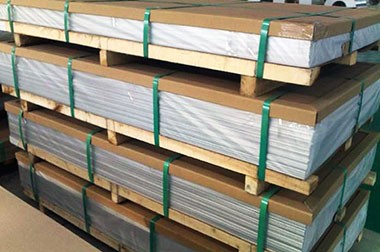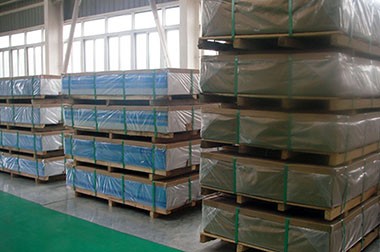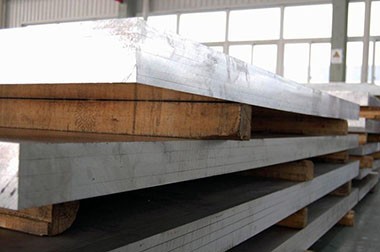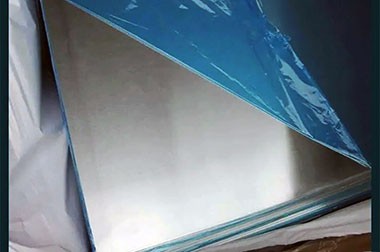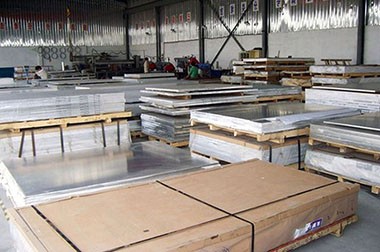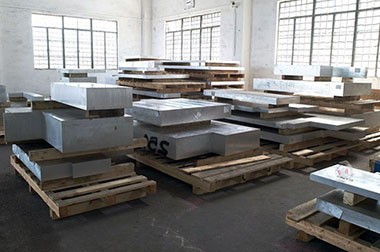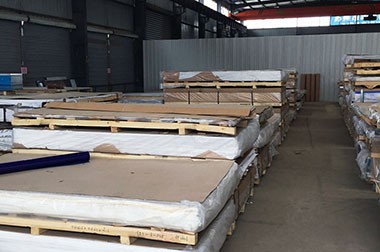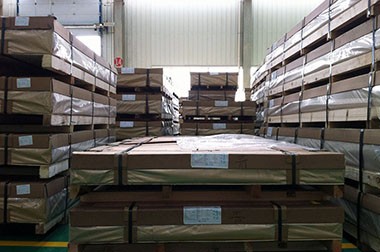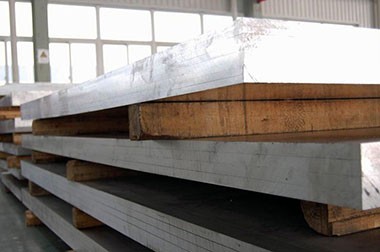5052 Aircraft Aluminum Sheet Plate
What is 5052 aircraft grade aluminum?
5052 aerospace aluminum is an aluminum alloy with magnesium as the primary alloying element. It has good corrosion resistance, high strength, and machinability, making it widely used in the aerospace field.
5052 aircraft-grade aluminum is a special alloy within the 5000 series of aluminum alloys, known for its excellent corrosion resistance, high strength, and good machinability. The main alloying element in 5052 aluminum is magnesium, which provides enhanced corrosion resistance and weldability.

Characteristics of 5052 Aircraft Aluminum Sheet Plate
- Composition: The primary alloying element in 5052 aluminum is magnesium (approximately 2.2-2.8%), which helps improve its strength and corrosion resistance. It may also contain small amounts of chromium and manganese.
- Corrosion Resistance: This alloy has strong corrosion resistance, making it very suitable for applications in harsh environments, such as marine and aerospace.
- Weldability: 5052 aluminum can be easily welded and formed, allowing for a variety of applications in different manufacturing processes.
- Formability: It has good ductility, making it easy to shape into complex forms.
Specification of 5052 Aluminum Sheet for Aircraft
| Alloy | Temper | Thickness(mm) | Width(mm) | Length(mm) |
| 5052 | H32/H34 | 0.2-3.5 | 2000-2650 | ≥10000 |
Chemical Composition of 5052 Aluminum Sheet
| Alloy | Si | Fe | Cu | Mn | Mg | Cr | Zn | Ti | Standard |
| 5052 | 0.25 | 0.40 | 0.10 | 0.10 | 2.2-2.8 | 0.15-0.35 | 0.10 | - | GB/EN/ASTM |
5052 Aluminum Sheet for Mechanical Properties
| Alloy | Temper | Thickness(mm) |
Yield Strength Rp0.2(Mpa |
Tensile Strength Rm(Mpa) |
Elongation A50(%) |
| 5052 | H32 | 0.2-3.5 | ≥160 | 215-265 | ≥4 |
| H36 | ≥200 | 255-305 | ≥2 |
Applications of 5052 Aircraft Aluminum Plate
1. Aircraft Fuel Tanks
Corrosion Resistance: The 5052 aluminum plate, due to its magnesium content, has excellent corrosion resistance, making it particularly suitable for aircraft fuel tanks and other areas that require prolonged contact with fuel and other liquids. It effectively prevents corrosion of the tank's inner walls, extending its service life.
Lightweight: The aerospace industry has stringent weight requirements for materials. The lightweight nature of 5052 aluminum plate effectively reduces the weight of the aircraft, increasing fuel efficiency and range.
2. Aircraft Seats
Lightweight and High Strength: The moderate strength and lightweight characteristics of 5052 aluminum plate make it ideal as a structural material for aircraft seats. Seats need to minimize weight while ensuring safety, enhancing passenger comfort and the aircraft's payload capacity.
Machinability: 5052 aluminum plate has good formability and machinability, making it easy to manufacture complex seat structures and their components.
3. Aircraft Cabinets
Aesthetics and Durability: The smooth surface of 5052 aluminum plate can undergo various surface treatments, such as anodizing and coating, providing excellent appearance and wear resistance. When used for aircraft cabinets, it not only increases durability but also enhances the aesthetics of the interior.
Fire Resistance: Due to the properties of the aluminum base material, 5052 aluminum plate possesses certain fire-resistant characteristics, meeting safety standards for aircraft interior materials.
4. Carts and Other Interior Components
Corrosion Resistance and Wear Resistance: Aircraft carts and interior components often come into contact with food and beverages, making them susceptible to corrosion from liquids and acidic or alkaline substances. The high corrosion resistance of 5052 aluminum plate helps prevent such erosion, ensuring the longevity of carts and other interior components.
Easy to Clean and Maintain: With a smooth surface that is less prone to dirt accumulation, interior components made from 5052 aluminum plate are easy to clean and maintain, suitable for high-frequency use in aircraft.
5. Other Applications
Ducts and Hydraulic System Components: 5052 aluminum plate is widely used in aircraft hydraulic systems and liquid transport pipelines. Its good formability and corrosion resistance make it an ideal material for these components.
Hatches, Bulkheads, and Floor Components: 5052 aluminum plate is commonly used to manufacture structural components such as aircraft hatches, bulkheads, and floors, providing strong support while reducing the overall weight of the aircraft.
What is the difference between 6061 and 5052 aluminum plate?
The 6061 aluminum plate is primarily used for high-strength structural components and brackets in aviation, while the 5052 aluminum plate is widely used for aircraft fuel tanks, interior components, and other parts requiring high corrosion resistance.
6061 Aluminum Plate in Aviation Applications
- Structural Components: Used for fuselage, wing spars, and tail structures, providing high strength and durability.
- Cabin Frames: Serves as a support structure within the cabin, bearing loads and pressure.
- Brackets: Used to manufacture engine and landing gear brackets, ensuring stability of the aircraft.
- Components: Used for various connectors and support rods, easy to machine and weld.
5052 Aluminum Plate in Aviation Applications
- Aircraft Fuel Tanks: Due to its strong corrosion resistance, it is commonly used in fuel tank manufacturing to prevent leaks.
- Interior Components: Used for seats, cabinets, and carts, enhancing comfort and durability.
- Lightweight Structural Components: Used to manufacture hatches and floor components, reducing weight.
Is 5052 more expensive than 6061?
Generally, the price of 5052 aluminum plate tends to be higher than that of 6061 aluminum plate. This is due to the higher magnesium content in 5052 aluminum plate, as well as its manufacturing process and performance characteristics (such as corrosion resistance and formability), which make it more popular for certain applications.
Specific prices can vary based on market supply and demand, aluminum thickness, processing methods, and other factors. Therefore, it is best to refer to current market conditions and specific application requirements when making a selection.

